The NVIDIA GeForce RTX 2070 Super & RTX 2060 Super Review: Smaller Numbers, Bigger Performance
by Ryan Smith on July 2, 2019 9:00 AM EST- Posted in
- GPUs
- GeForce
- NVIDIA
- Turing
- GeForce RTX
Meet the GeForce RTX 2070 Super & RTX 2060 Super
Taking a closer look at the RTX 2070 Super & RTX 2060 Super Founders Edition cards, there aren’t too many surprises to be found. Since we’re dealing with a mid-generation kicker here, NVIDIA has opted to stick with their original RTX 20 series reference designs for the new cards, rather than design wholly new boards. This has allowed them to get the new cards out relatively quickly, and to be honest there’s not a whole lot NVIDIA could do here that wouldn’t be superficial. As a result, the RTX 2070 Super and RTX 2060 Super are more or less identical to the RTX 2080 and RTX 2060 respectively.
| GeForce RTX 20 Series Card Compariaon | ||||||
| RTX 2070 Super Founders Edition |
RTX 2070 Super (Reference Specs) |
RTX 2060 Super Founders Edition |
RTX 2060 Super (Reference Specs) |
|||
| Base Clock | 1605MHz | 1605MHz | 1470MHz | 1470MHz | ||
| Boost Clock | 1770MHz | 1770MHz | 1650MHz | 1650MHz | ||
| Memory Clock | 14Gbps GDDR6 | 14Gbps GDDR6 | 14Gbps GDDR6 | 14Gbps GDDR6 | ||
| VRAM | 8GB | 8GB | 8GB | 8GB | ||
| TDP | 215W | 215W | 175W | 175W | ||
| Length | 10.5-inches | N/A | 9.0-inches | N/A | ||
| Width | Dual Slot | N/A | Dual Slot | N/A | ||
| Cooler Type | Open Air (2x Axial Fans) |
N/A | Open Air (2x Axial Fans) |
N/A | ||
| Price | $499 | $499 | $399 | $399 | ||
As I noted earlier, the Founders Edition cards themselves are now purely reference cards. NVIDIA isn’t doing factory overclocks this time around – the high reference clock speeds making that process a bit harder – so these cards are very straightforward examples of what the RTX 2070 Super and RTX 2060 Super can deliver in terms of performance. It also means that these cards no longer carry a price premium, with NVIDIA selling them at the $499 and $399 MSRPs respectively.
Starting with the RTX 2070 Super then, possibly the only material change is quite literally in the materials. NVIDIA has taken the 2080 reference design and given the center segment of shroud a reflective coating. This, along with the Super branding, are the only two visually distinctive changes from the RTX 2080 reference design. For better or worse, the reflective section is every bit the fingerprint magnet that you probably expect, so thankfully most people aren’t handling their video cards as much as hardware reviewers are.
In terms of cooling then, this means the RTX 2070 Super gets the RTX 2080’s cooler as well. At a high level this is a dual axial open air cooler, with NVIDIA sticking to this design after first introducing it last year. The open air cooler helps NVIDIA keep their load noise levels down, though idle noise levels on all of the RTX 20 series reference cards has been mediocre, and the new Super cards are no different. The fact that this reference design isn’t a blower means that the RTX 2070 Super isn’t fully self-exhausting, relying on the computer chassis itself to help move hot air away from the card. For most builders this isn’t an issue, but if you’re building a compact system or a system with limited airflow, you’ll want to make sure your system can handle the heat from a 215W video card.
Under the hood, the RTX 2070 Super inherits the RTX 2080’s heatsink design, with a large aluminum heatsink running the full length of the card. Deeper still, the heatsink is connected to the TU104 GPU with a vapor chamber, to help move heat away from the GPU more efficiently. Overall the RTX 2070 Super has the same 215W TDP as the RTX 2080, so it behaves virtually identically to the latter card. Which is to say that it has no problem keeping its cool.
Since this card is needed for further testing I haven’t shucked the card down to its PCB, but according to NVIDIA the power delivery system is also identical to the RTX 2080. In this respective NVIDIA’s reference designs are solid, and while they won’t be enough for hardcore overclockers, it’s more than sufficient for the kind of overclocking that can be done with the reference cooler. Of particular note, the maximum power target for the card is +20%, which means it can have its TDP increased to 258W. Accordingly, the card is fed by the same 6pin + 8pin power system as on the RTX 2080, more than guaranteeing the card can be fed up to its power target limit.
Finally, for display I/O, the card gets the continuing NVIDIA high-end standard of 3x DisplayPort 1.4, 1x HDMI 2.0b, and 1x VirtualLink port (DP video + USB data + 30W USB power).
GeForce RTX 2060 Super
Shifting gears, for building the RTX 2060 Super NVIDIA has gone the opposite direction, using the RTX 2060 reference design as the base. The 2060 itself wasn’t all that different from the 2080 – and the same holds for its Super variant – but there are a few notable distinctions from the newly minted RTX 2070 Super.
In terms of overall design, the RTX 2060 Super Founders Edition card retains the same design aesthetic – reflective bits and all – but it comes in a smaller package. Overall the card is just 9 inches long, which is 1.5 inches shorter than the RTX 2070 Super. The cooling system has also been simplified a bit – mostly forgoing the vapor chamber – though it still retains the card’s full-body heatsink and dual fan open air cooler.
With a 175W TDP, the card relies on a single 8pin PCIe power connection at the rear of the card for the extra power it needs. Overclockers meanwhile will be able to pump up the power target by 22%, allowing the card’s TDP to be raised to a maximum of 213W.
Outside of its smaller stature, the other big departure for the RTX 2060 Super from its more powerful sibling is in the display I/O configuration. As with the regular RTX 2060, the Super card drops the 3rd DisplayPort for a DL-DVI-D port, giving the card a final tally of 2x DisplayPort 1.4, 1x HDMI 2.0b, 1x DL-DVI-D, and a sole VirtualLink port.


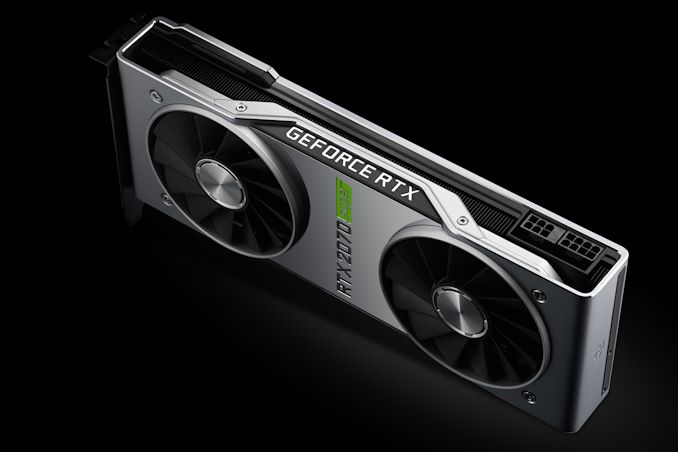
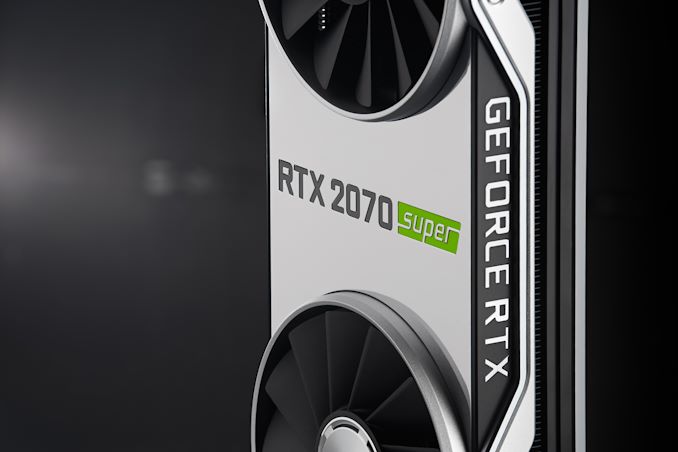
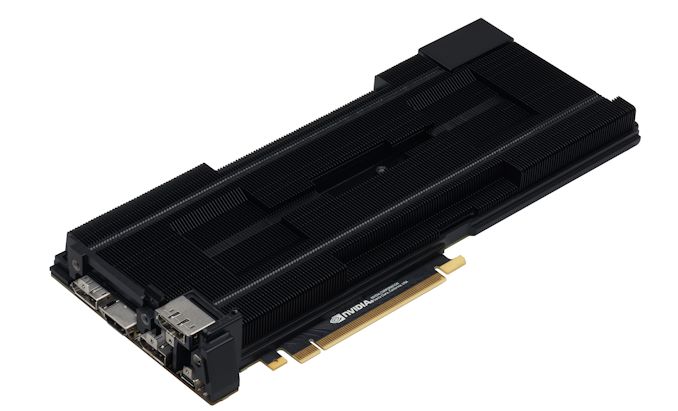

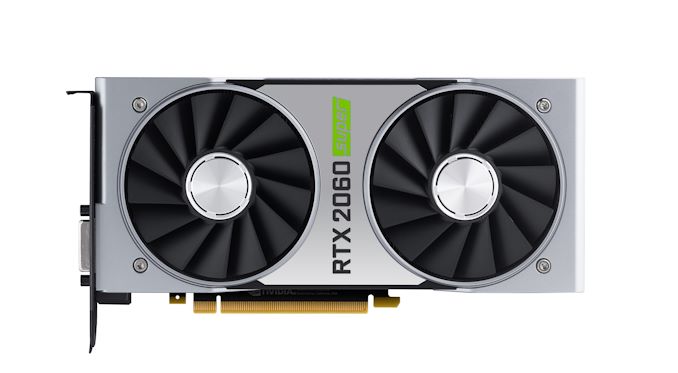
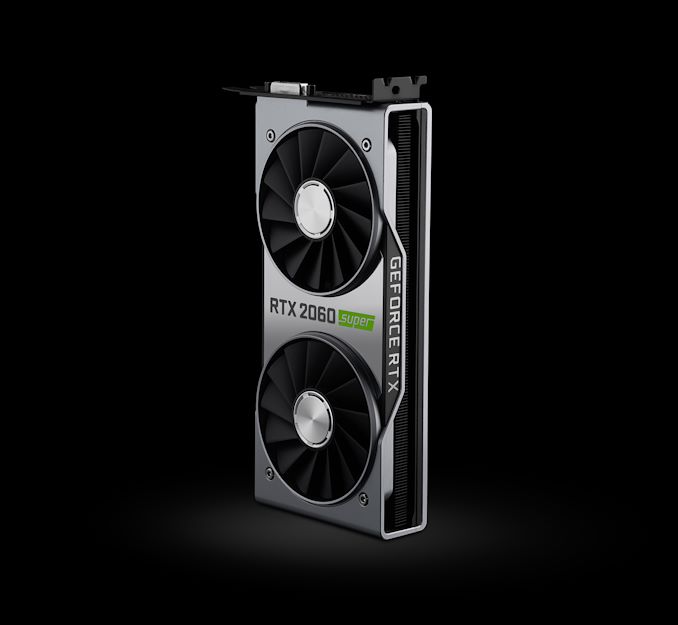









281 Comments
View All Comments
tamalero - Wednesday, July 3, 2019 - link
You mean the 1080ti right? the 2080 >= 1080TI, not vanilla 1080. Therefore 2070 super is closer to 1080TI territory.Samus - Wednesday, July 3, 2019 - link
The catch is on the used market you can pickup 1080 (non-Ti) for <$300. I recently picked one up for $250 off Facebook Market, and I've seen 1070Ti's for $200.It's mostly people dumping and buying into the ray tracing train. And even with these cards, as fast as they are, you still need to spend a LOT (hundreds more) for a card not significantly more powerful than a 1080.
Opencg - Wednesday, July 3, 2019 - link
i meant the 2080 since that is the performance target of the 2070 super. stock to stock is close if you compare to a 2080 with 1710mhz boost. but many are clocked 1800 or higher and the overclocking headroom will still be much better on the old 2080 vs the 2070 super. its the same chip and you run into the frequency wall at the same range. the 2070 super just has less cores.Gastec - Wednesday, July 17, 2019 - link
King of value my ass! The GTX 1080 Ti has always been too expensive and these RTX cards are just obscene. But that's what happens when they trick you with anchoring.If you don't understand, go watch "Let’s go whaling: Tricks for monetising mobile game players with free-to-play" video on YouTube and skip to 12:27
bchiemara - Friday, March 6, 2020 - link
I bought the 2070 super for the ray tracing hardware, which the 1080 Ti does not have and doing ray tracing in software the 1080 Ti can't compete with the 2060 let alone the 2070 or the Super cards.techxx - Tuesday, July 2, 2019 - link
Yup. RTX cards are still priced as if they launched 3 years ago. Pathetic Nvidia and even more pathetic consumers who give them a dime. Nvidia completely destroyed the GPU market where only fools buy into it.PeachNCream - Tuesday, July 9, 2019 - link
As someone that plays computer games just fine on crappy, slow iGPUs like Bay Trail graphics or a Radeon HD 6310, I can safely say that you can waste just as many hours of your life rotting away behind slow, cheap hardware if you're the slightest bit selective about the titles you pick to play on your hardware so yes, there is literally zero reason to give a flying you-know-what about what graphics card does what or even really care overly much about the sort of computer you currently own as long as the stupid thing boots up and all its buttons work.Qasar - Wednesday, July 10, 2019 - link
the games i play.. wouldn't work as well on vid cards like the ones you use Peach :-) to graphically intensive, and when your turn the eye candy down.. kind of looks like games from the mid 90s in DOS....Questor - Friday, July 5, 2019 - link
Exactly!Santoval - Wednesday, July 3, 2019 - link
Branding matters significantly. *You* might buy RTX 2080/2070 Trash, but most people will definitely not. You might not care but Nvidia surely does.